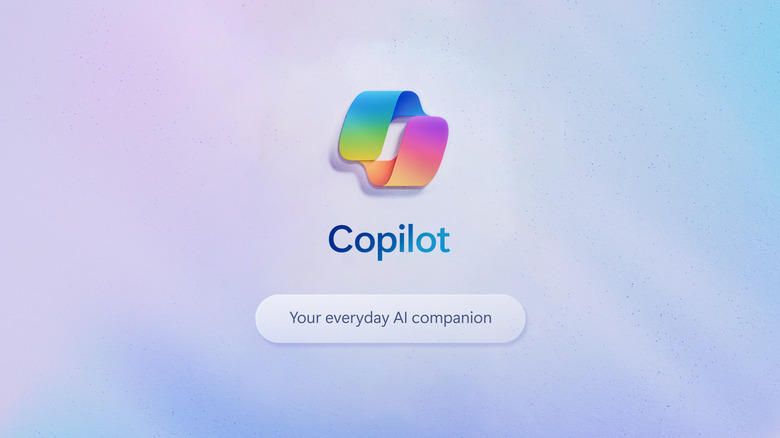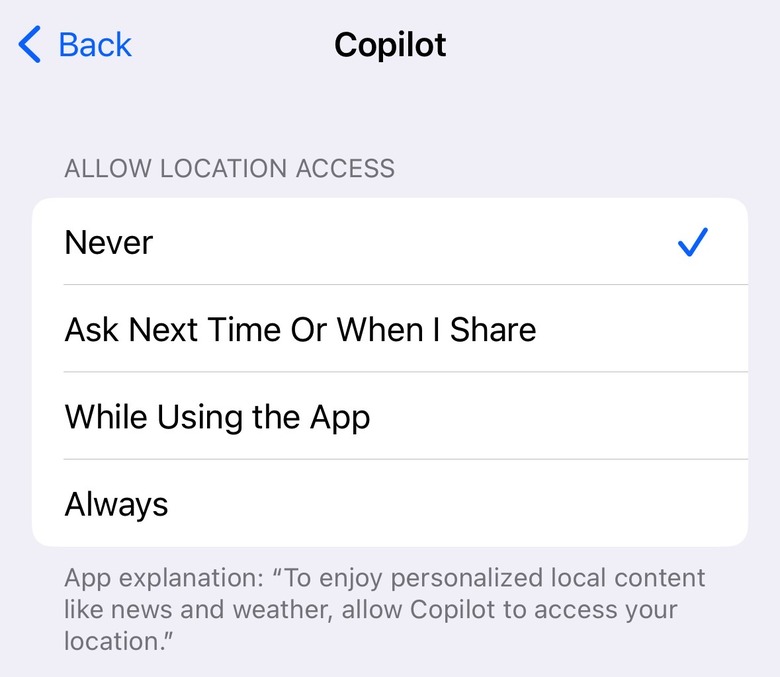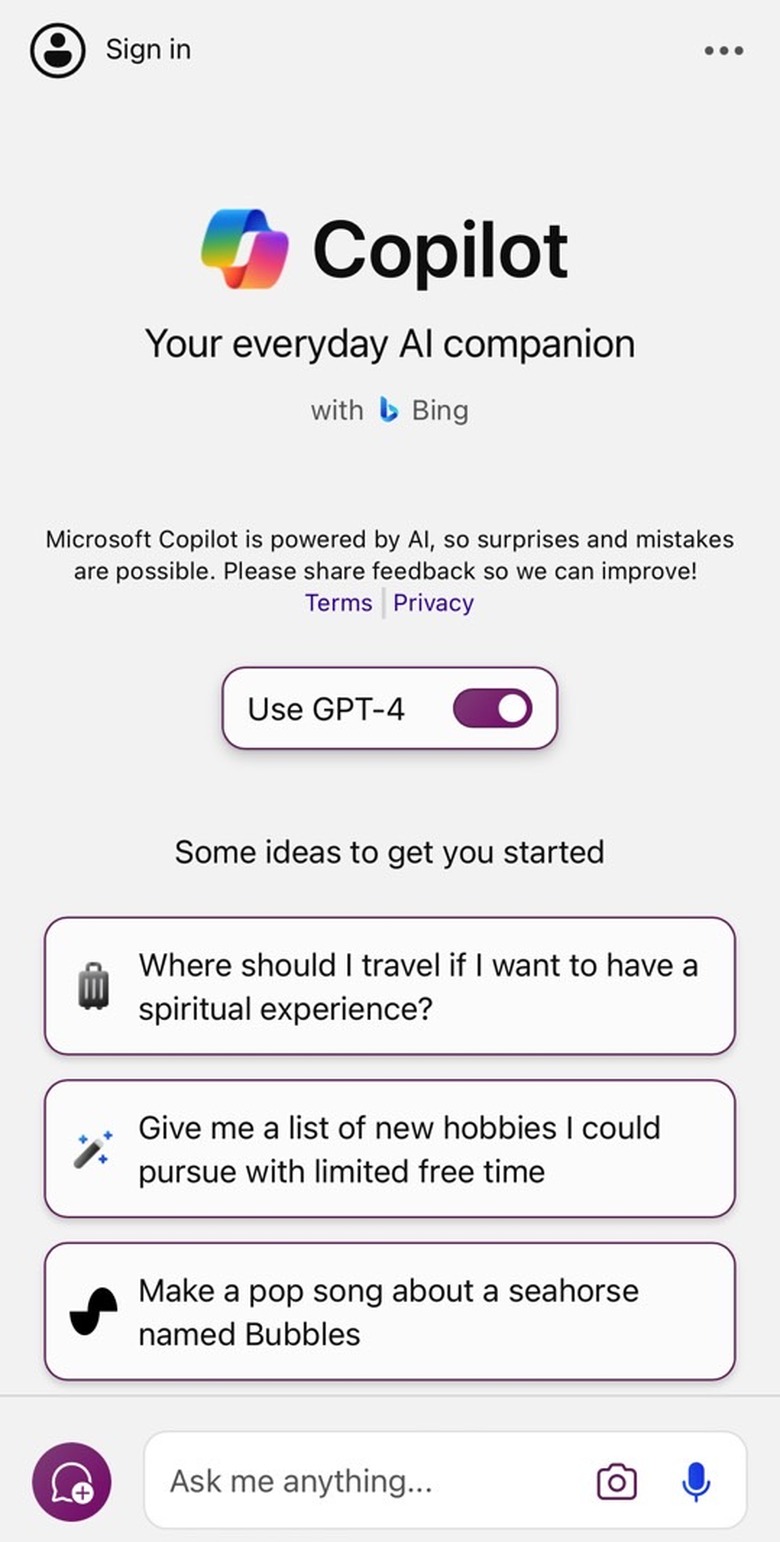Microsoft Copilot: The First Four Things You Should Do Now That It's Available On iPhone
Unlike OpenAI, Microsoft released its newest generative AI app on Android before bringing it to the iPhone. That's Microsoft Copilot, which landed on Android a few days ago. But just before 2023 ended, Microsoft made sure Copilot launched on iOS.
Microsoft Copilot is the revamped Bing Chat that brought us Microsoft's first version of a ChatGPT-infused generative AI experience. Bing Chat is still available as a standalone app on iPhone. But you probably should focus on Microsoft Copilot, which will likely get the most attention from Microsoft.
Like Bing Chat and ChatGPT, Copilot is available as a free download from the App Store, but it does have a few twists, including good and bad ones. It's not all bad, however.
Copilot offers free access to GPT-4, which you can only access through a $20 monthly subscription to ChatGPT Plus. But you might have to pay for that with your data. That's all you need to know to guess the three things you should do with Microsoft Copilot once you install it on iPhone and iPad.
Disable location access
Among the data Microsoft Copilot collects is location information. Microsoft has to ask you whether you want to share that data. I set mine to "Never," one of the location-sharing options on mobile phones. That means I won't get personalized local content like news and weather, which is great music to my ears.
If you want such features, you can share location information with Microsoft. And you can change your preferences from the Settings app at any time.
Prevent Copilot from tracking you online
In addition to requesting permission to use your location, Copilot will also issue a prompt as soon as you run the app for the first time to ask for permission to track you across apps and services. I didn't give Copilot permission to do it. It's not about Microsoft. It's what I do with any app that asks me to allow tracking.
Like the location setting, this can be changed from the Settings app later.
The reason why Microsoft is doing this is simple. It has to monetize Copilot somehow. Remember that nothing is free on the internet, so you'll have to pay for AI access somehow.
Enable GPT-4
As soon as I was done with the permission prompts above on my iPhone 14 Pro, I spotted an interesting setting inside the Copilot app. Microsoft offers you the option to "Use GPT-4" to power the replies to your prompts. I went ahead and did that.
Toggle that feature on to get better ChatGPT performance than the GPT-3.5 model that also powers the free ChatGPT experience on the web.
Microsoft Copilot will let you ask questions that contain images, like ChatGPT. And it'll let you create content, whether it's the written kind or AI-generated images. On the latter, it uses Dall-E integration from the same OpenAI.
Sign into your Microsoft account
Interestingly, Microsoft doesn't insist on you signing into your Microsoft Account. But that's probably another step you should take for a better Copilot experience. It's likely your Copilot experience will be limited otherwise. Plus, using an account lets you sync your Copilot chats across different devices.
Copilot is also available on the web, like ChatGPT. And you'll have to sign in to get started. Copilot works inside the Edge and Chrome browsers, and you'll find it at this link.


